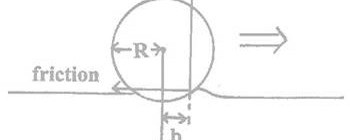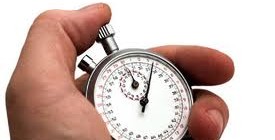We all have heard that the majority of players typically under-read putts, something we see across all level of golf up to and including tour players. Most of us also use training aids which train a straight starting line off an initial aim, encouraging the player to start the ball on or very close to where they are aimed. There are no training aids that we’ve seen which teach you to manipulate the face.
But if you under-read your putt you only have a few options for saving it and getting the ball started on the right line. You can adjust/manipulate the face angle at impact to a higher line, or you can shift the path dramatically to get a higher line, or you can hit the putt harder to take some break out of it. In this blog we only take a look at using speed to compensate for bad reads to see if that is actually a viable option, considering that we want as few manipulations as possible.
Our method was to run a simulation of putts on a stimp 10 green that were read 1, 2 and 3 degrees too low, and calculate what speed you would have to use to compensate for the low read and still make the putt. And obviously if you under-read by 1 degree then you could also compensate for it with a 1 degree change in face angle. But ask yourself how often you practice face manipulation intentionally, both open and closed, so that you can start your ball on a line other than what you’ve chosen.
Looking at 10-foot putts, if you under-read by 1 degree you must use at a speed that goes 4.5 feet past the hole in order to take enough break out. However, if you under-read the same putt by 2 degrees, you would have to hit it 14.6 feet past the hole, at which speed the ball cannot fall in. A read 3 degrees low for the same putt is unrecoverable because it would be aimed below the hole. Basically on these flatter putts with little break, a 1 degree read error from 10 feet (read 2 inches low) leaves you no good option for using speed to save it.
The image below shows these 10-foot putts, the solid lines are read 1, 2, and 3 degrees too low but with correct speed, and the dotted lines are the corresponding misreads adjusted with more speed so that they hit the hole.

(YELLOW – 1° LOW, BLUE – 2° LOW, RED – 3° LOW)
Next let’s look at a 10-foot putt across a 2% slope and see if things change. It turns out you have a better chance to use speed to save a low read, having 1, 2, and 3 degree misses which are more recoverable with capture speeds of 2.2, 3.8, and 6.5 feet past the hole.

And the results across a 3% slope show speed adjustments of 3.9, 5.5, and 8.2 feet past the hole.

If we throw out any solutions that result in the ball stopping more than 3 feet past the hole (because we don’t want to three-putt), then you can never miss your line by more than 1 degree and hope to hit an acceptable putt from 10 feet, and most of the time that is even too much.
The table below summarizes the results on 10-foot putts across the slope:
TABLE
So the next time you hear someone tell you that the read or the aim doesn’t matter, consider the fact that a poor one will leave you few options for making a good putt other than dramatically changing your face angle at impact. This would have to be all based on some intuitive sense that something was wrong to begin with.
Ask yourself this:
- How confident are you in your ability to juggle your manipulations to suit a miss-read or miss aim?
- Do you want to rely on these changes for every putt?
Or is it your intention to develop consistency and reliability? If so, then a good read and the ability to start your putt within 1 degree of your intended line is crucial. And when you don’t have to dynamically change face angle and capture speed for poor reads, then putting becomes a whole lot easier.


























